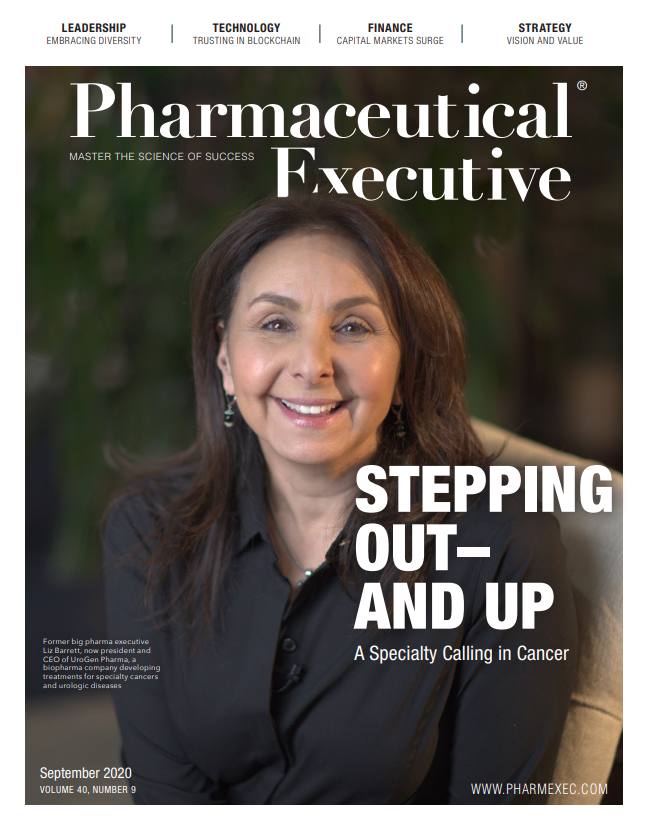(O)mega Opportunity: Vascepa
Uncovering fish oil derivative’s benefit for heart health.

The development of Amarin’s Vascepa (icosapent ethyl) has a long and storied history. But the reasons behind Vascepa’s choice for inclusion in our annual Product Launch feature surround the December 2019 FDA approval of its new indication, where the drug became the first and only approved therapy to reduce persistent cardiovascular risk (P-CVR) beyond statin therapy in a broad group of high-risk patients approved for treatment. FDA’s approval was supported by Amarin’s REDUCE-IT study.

Notable aspects of the approval, as discussed with Dr. Craig Granowitz, senior vice president, chief medical officer at Amarin, included the unmet therapeutic needs that still exist in the cardiovascular disease area, the quality and scientific acceptance of the REDUCE-IT study, and the education challenge for Vascepa—based on COVID-19— as well as its misunderstood place in the omega-3 narrative.
Granowitz joined Amarin four years ago to continue his passion for addressing fundamental needs in primary care medicine, many of which have been abandoned by other pharmaceutical companies.
Craig Granowitz

This includes cardiovascular disease (CVD), which Granowitz describes as a disease hiding in plain sight. Although CVD is the number one cause of death globally, killing 17.9 million people a year, or one-third of all deaths, and the root issue to a host of comorbidities associated with CVD, including diabetes, respiratory issues, and depression, Granowitz says it’s a growing global crisis that continues to be unaddressed.
Thus, his excitement for Vascepa, as he ticks off a list of its benefits: “it’s a pragmatic drug, a drug that is well tolerated, not expensive, unprecedented efficacy, no drug-drug interactions, and is generally accepted by the general public who are quite familiar with omega-3s…it’s a boon to society,” says Granowitz. Vascepa was initially approved in 2012 for adults with severe triglyceride levels.
As for Amarin’s dedication to the development of Vascepa’s REDUCE-IT study (NCT01492361), beginning in December 2011, 8,179 patients with established CVD or with diabetes and other risk factors who had been receiving statin therapy were randomized into a global, 410-site trial, with an estimated price tag of $350 million. Granowitz says the study was “a huge lift” for a company the size of Amarin. “And we did it. We ran the study the right way, for the right duration and we got a great outcome,” he says.

The scientific and medical impact of REDUCE-IT—results of which debuted as a late breaker at the 2018 American Heart Association (AHA) meeting—led to Vascepa, within a year, being included in almost every relevant guideline or scientific statement in the US, including the American Diabetes Association, American Heart Association, and National Lipid Association.
Recognizing its scientific merits, European medical associations also included the drug in their guidelines, even prior to product approval. Vascepa was approved in Canada on an accelerated review basis, and is currently under review with the European Medicines Agency (EMA), where Amarin is hoping for a positive opinion at the end of the year for an early 2021 launch. In addition, the product recently received the Institute for Clinical and Economic Review’s (ICER) stamp of approval; the drug pricing watchdog considered Vascepa very cost effective under every scenario it tested.
On the heels of a successful launch in the US was the emergence of COVID-19 and its downstream effects on physician practices. “I understand that many patients aren’t going to start a new medication remotely and keep up a treatment plan. And it’s not really appropriate in many cases for a physician to start a medication without spending face-to-face time with the patient and conducting a full exam, which would routinely take place to initiate any new medication, even one which seemingly has a very favorable risk profile,” says Granowitz, from his practicing physician viewpoint. But from a business standpoint, Granowitz acknowledges the growth forecast for Vascepa has slowed due to COVID-19. “As we’ve communicated publicly, we are below what our initial plans were, but our growth rate has been certainly better than the industry averages,” he says.

In March, Amarin launched its unbranded CVD education site, www.truetoyourheart.com. The website is a resource and starting point for the third discussion point around Vascepa and it’s mechanism of action.
Icosapent ethyl is made from the omega-3 fatty acid eicosapentaenoic acid (EPA), a fish oil-based medication. Most people are well aware of the benefits of omega-3 fatty acids and the addition of eating foods rich in omega-3s to regulate a variety of heart conditions, as well as taking fish oil supplements. But there is significant difference between a dietary supplement and a prescription medication. The omega-3 fatty acids found in fish oil include DHA (docosahexaenoic acid) and EPA. However, in the body, DHA is converted into EPA in very small amounts. Consumed EPA is found in most tissues in a person’s body and seems to do a lot of the work or heavy lifting. “I’m really proud that we’ve been able to clearly define some fundamental issues about EPA, and EPA versus DHA, at the physical, biochemical, biochemistry, at cellular levels,” says Granowitz. “And, now it’s about pharmacodynamics and clinical outcomes.”
Demand for dietary supplement products has soared during the COVID-19 pandemic. (monticellllo - stock.adobe.com)

To Granowitz, the opportunity for Vascepa is precisely in that intersection of omega-3 misunderstanding. “The fact is, 20 million Americans, on average, go to the drug store or health food store to purchase omega-3s using their own money,” he says. “What a tremendous opportunity to educate people on the difference between a dietary supplement maintaining health for some versus a prescription medication to address a disease process. I’m grateful that the level of awareness, understanding, and motivation of patients is pretty high.”
But inside that intersection is also what concerns Granowitz— the misinformation or incomplete picture. “People can’t use a dietary supplement to treat a serious medical condition,” he says. “In REDUCE-IT, one of the most sobering statistics was that a third of the US patients developed a major cardiovascular event within four years of being in the study. And they were managed optimally for all of their underlying cardiovascular risk factors, including a median low-density lipoprotein (LDL, also known as “bad” cholesterol) of 75. That’s not a person that should be self-medicating with a dietary supplement. That won’t prevent them from having a future myocardial event.”

COVID-19 also could be an opportunity in disguise. The global vitamins and mineral supplements market is expected to grow 18.3% from 2019 to 2020, and the sale of vitamins and mineral supplements is skyrocketing during the pandemic, according to Reportlinker.
“People are afraid to go to the doctor. They want to maintain their health. That’s the natural outcome of someone who is motivated, who is a seeker and doer,” says Granowitz. “And it’s representative of the opportunity that patients really are interested in their health and they really want to help themselves.”
The question, he concludes, is “How do we, as an industry, as the intermediaries and educators, all help patients understand what evidence-based, scientific innovations should be used and in what place?”
Lisa Henderson is Pharm Exec’s Editor-in-Chief. She can be reached at lhenderson@mjhlifesciences.com.

The Misinformation Maze: Navigating Public Health in the Digital Age
March 11th 2025Jennifer Butler, chief commercial officer of Pleio, discusses misinformation's threat to public health, where patients are turning for trustworthy health information, the industry's pivot to peer-to-patient strategies to educate patients, and more.
Navigating Distrust: Pharma in the Age of Social Media
February 18th 2025Ian Baer, Founder and CEO of Sooth, discusses how the growing distrust in social media will impact industry marketing strategies and the relationships between pharmaceutical companies and the patients they aim to serve. He also explains dark social, how to combat misinformation, closing the trust gap, and more.